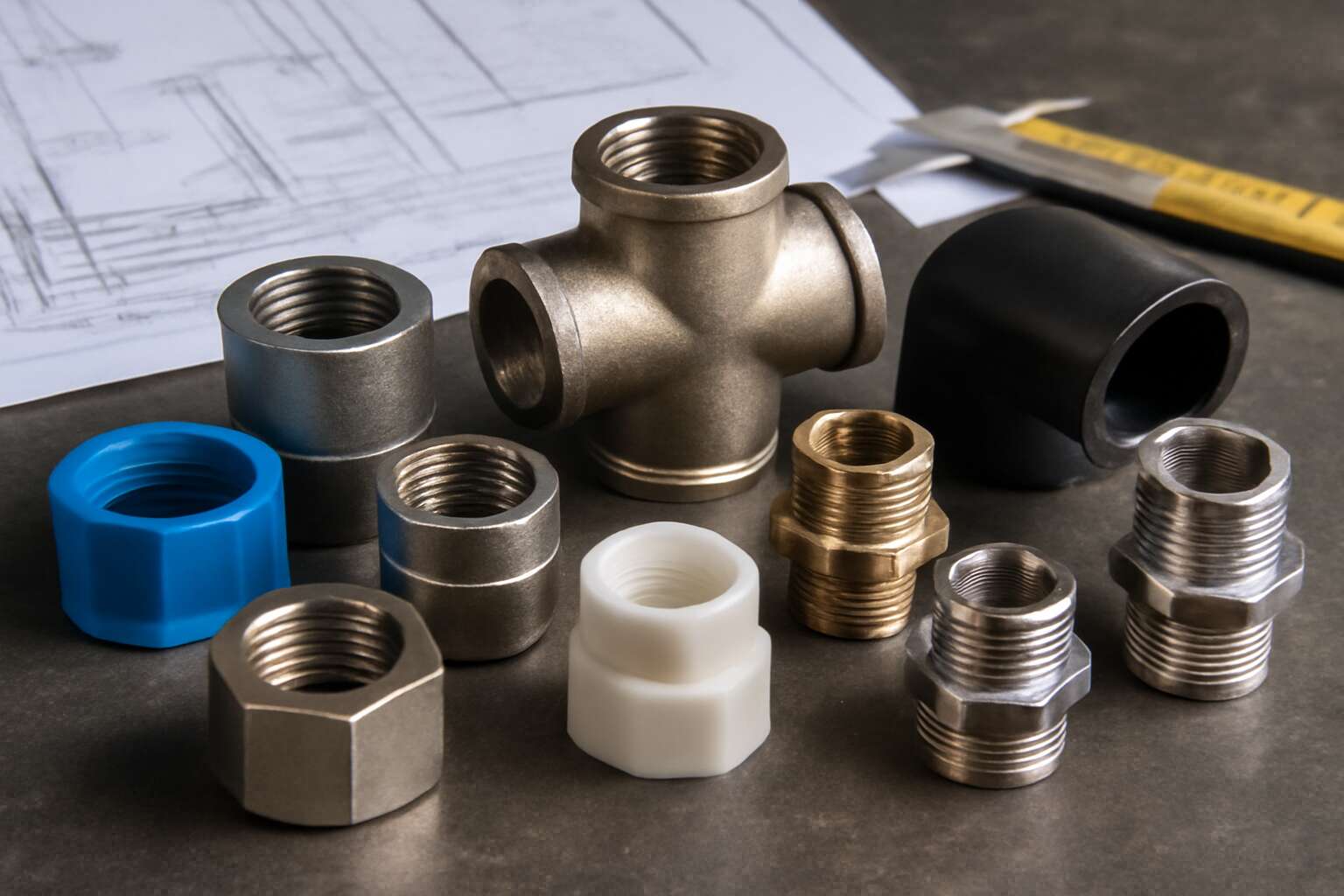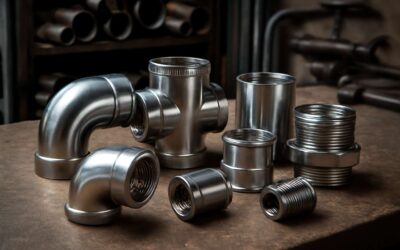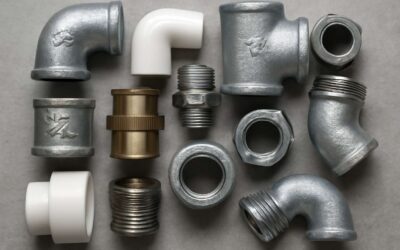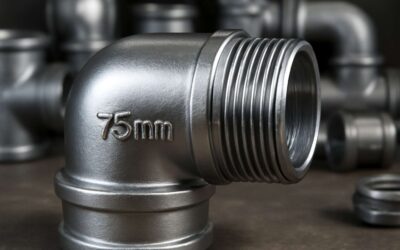Overview of Pipe Fittings and Material Selection
Importance of Choosing the Right Material – How material selection impacts durability, cost, and performance
When it comes to plumbing, choosing the right pipe fitting material list isn’t just a matter of preference—it’s a strategic decision that can make or break your project. Did you know that improper material selection accounts for over 60% of pipe failures in South African infrastructure? That’s a statistic that can make even the most seasoned DIY enthusiast second-guess their choices. The reason? The material you pick influences the entire lifespan, performance, and cost-effectiveness of your piping system.
Imagine installing pipes that corrode faster than a South African summer. Not ideal, right? The key is understanding how different materials—from durable PVC to robust copper—can withstand the local climate and water conditions. A carefully curated pipe fitting material list ensures you’re not just throwing parts together but creating a resilient, leak-proof network that stands the test of time. Whether it’s for commercial, residential, or industrial use, the right material selection impacts durability, cost, and overall system performance—so choose wisely, or face costly consequences down the line.
Types of Pipe Fittings – Overview of different fitting types such as elbows, tees, couplings, reducers
Understanding the different types of pipe fittings is essential for creating a reliable plumbing system. Each fitting serves a specific purpose and must be matched with the right material from the pipe fitting material list. Common fittings include elbows, tees, couplings, and reducers—each designed to connect pipes, change direction, or adjust flow capacity.
Elbows, for example, come in various angles—most frequently 45° and 90°—to navigate tight spaces or change the pipe’s direction. Tees allow for branching, creating a junction that distributes water or other fluids efficiently. Couplings are simple connectors that join two pipes end-to-end, while reducers help connect pipes of different diameters, ensuring a seamless flow transition.
Choosing the right material for these fittings is critical. Materials like PVC, copper, or brass are common choices, each offering unique advantages. A comprehensive pipe fitting material list ensures compatibility, durability, and performance, especially when working within the specific water and climate conditions of South Africa. Proper selection means fewer failures and longer-lasting systems.
Common Materials Used for Pipe Fittings
Metal Materials
When delving into the intricate world of pipe fitting material list, the choice of metal materials emerges as a pivotal consideration—each one whispering its own story of resilience and adaptability. South Africa’s diverse industrial landscape demands fittings that can withstand corrosive environments and fluctuating temperatures, making the selection of premium metal materials more critical than ever. Steel, cast iron, copper, and brass are among the stalwart options that have stood the test of time, each offering distinctive properties that serve specific applications with unwavering reliability.
Steel, especially stainless steel, is revered for its formidable strength and corrosion resistance—perfect for high-pressure systems. Copper, with its excellent thermal conductivity, often finds its place in plumbing and HVAC applications, while brass offers remarkable machinability and durability for fittings that require precision. The comprehensive pipe fitting material list often includes these metals, highlighting their integral roles in ensuring structural integrity and longevity. Understanding these materials’ unique attributes helps professionals craft systems that are both efficient and enduring—truly a testament to the artistry within pipe fitting design!
Plastic Materials
While metal reigns supreme in many pipe fitting applications, plastic materials have quietly woven their resilience into the fabric of modern piping systems. These materials are celebrated for their lightweight nature, ease of installation, and impressive corrosion resistance—qualities that make them indispensable in specific environments. The pipe fitting material list often features options like PVC, CPVC, PEX, and PP-R, each tailored to meet unique demands.
PVC (polyvinyl chloride) and CPVC (chlorinated polyvinyl chloride) are among the most prevalent, especially in water supply and drainage systems, offering longevity and cost-effectiveness. PEX (cross-linked polyethylene) shines in radiant heating and plumbing, providing flexibility and thermal stability. Meanwhile, polypropylene (PP-R) is revered for its ability to withstand high temperatures and pressures, making it ideal for hot water applications. These diverse plastic materials extend the reach of pipe fitting designs, blending durability with adaptability in South Africa’s varied industrial landscape.
Specialized Materials for Pipe Fittings
Cast Iron – Durability and typical use cases in drainage systems
Cast iron stands out among specialized materials for pipe fittings due to its exceptional durability and resistance to corrosion, making it a staple in South African drainage systems. Its dense, heavy composition ensures longevity even under demanding conditions, providing peace of mind for infrastructure that must withstand decades of use. When considering a pipe fitting material list, cast iron often appears as the preferred choice for underground sewer lines and industrial drainage applications.
This material is not only robust but also offers excellent sound-dampening qualities, which are invaluable in urban environments where noise reduction is a priority. Its typical use cases include stormwater management and waste disposal systems, where durability and reliability are non-negotiable. For those seeking a resilient solution, cast iron pipe fittings provide a formidable barrier against the wear and tear of time. Its unique properties make it a fascinating component of any comprehensive pipe fitting material list, especially when longevity and performance are paramount.
Ductile Iron – Strength and flexibility advantages
When it comes to specialized materials for pipe fittings, ductile iron deserves a standing ovation. Not only does it combine strength with remarkable flexibility, but it also manages to do so without breaking the bank—well, relatively speaking. This malleability makes ductile iron an ideal candidate for complex piping networks that demand both resilience and adaptability, especially in the unpredictable South African climate.
Unlike cast iron, which leans heavily on durability, ductile iron brings a new level of versatility to the pipe fitting material list. Its ability to withstand high pressure and resist impact makes it a favorite for water transmission and industrial applications. Plus, it offers added benefits such as:
- Enhanced ductility, allowing it to bend without snapping under stress
- Superior corrosion resistance, extending the lifespan of fittings
- Ease of installation thanks to its lightweight design compared to traditional options
This dynamic duo of strength and flexibility ensures ductile iron pipe fittings are nothing short of a game-changer—proving that sometimes, bending the rules is exactly what you need in a pipe fitting material list. Whether for municipal water systems or industrial pipelines in South Africa, ductile iron’s unique properties make it a material worth considering when durability and performance are non-negotiable.
Bronze and other Alloys – Corrosion resistance in marine and industrial environments
When it comes to specialized materials for pipe fittings, bronze and other alloys are the unsung heroes—especially in challenging environments like South Africa’s rugged coastal and industrial zones. These materials are celebrated for their exceptional corrosion resistance, a trait that can make or break the longevity of your piping system. Unlike standard steel, bronze alloys form a protective patina over time, shielding the fittings from saltwater, chemicals, and other corrosive agents. This makes them an excellent choice for marine applications or industrial setups where exposure to aggressive substances is unavoidable.
Here’s where the pipe fitting material list truly shines—highlighting metals like bronze, brass, and various corrosion-resistant alloys that bring durability and reliability to the table. These materials are often preferred for their:
- Corrosion resistance in marine environments
- Ability to withstand chemical exposure
- Long-term performance under demanding conditions
While they might come with a slightly higher price tag, their resilience ensures fewer replacements and maintenance downtime—saving both time and money in the long run. For South African industries, where environmental factors can be unpredictable, including these specialized alloys in your pipe fitting material list isn’t just smart—it’s essential for ensuring your infrastructure stands the test of time.
Composite Materials – Hybrid solutions for specialized needs
When it comes to tackling specialized needs in piping systems, composite materials have emerged as a game-changer. These hybrid solutions combine the strength of traditional metals with the versatility of advanced polymers, offering an innovative twist to the pipe fitting material list. Imagine fittings that can resist not only corrosion but also extreme temperature fluctuations—these are the hallmarks of composite materials. They are perfect for environments where standard materials might falter, especially in South Africa’s diverse industrial landscape.
Incorporating composite materials into your pipe fitting material list can provide a remarkable balance of durability and adaptability. For example, fiberglass-reinforced plastics (FRP) and other hybrid solutions deliver corrosion resistance and lightweight properties, making installation and maintenance less cumbersome. These materials are especially advantageous in applications requiring chemical resistance or where weight savings are critical.
To meet specialized demands, some manufacturers now offer composite fittings with layered construction, combining the resilience of metals with the corrosion-proof qualities of plastics. Such innovations ensure long-lasting performance, reducing downtime and costly repairs—an essential factor for industries across South Africa that rely on robust piping infrastructure.
Factors Influencing Material Choice for Pipe Fittings
Fluid Type and Corrosiveness – Selecting materials based on fluid properties
When selecting the optimal components from a comprehensive pipe fitting material list, understanding the fluid’s nature is paramount. The corrosiveness and chemical composition of the fluid dictate which materials will withstand prolonged exposure without degradation or failure. For instance, aggressive acids or alkalis demand high resistance from the pipe fitting material list, often leading engineers to opt for advanced composites or corrosion-resistant alloys. The challenge lies in balancing durability with cost-efficiency, especially in environments like South Africa where industrial and municipal infrastructure face unique stressors.
Fluid type and corrosiveness influence not only material durability but also safety and operational efficiency. In highly corrosive environments, such as seawater or industrial waste, selecting materials like bronze alloys or specialized plastics from the pipe fitting material list can prevent costly leaks and downtime. It’s essential to evaluate the fluid’s pH, temperature, and chemical reactivity before finalizing the material choice, ensuring longevity and performance. Sometimes, a hybrid approach—integrating different materials—becomes the most practical solution for complex systems requiring a tailored pipe fitting material list.
Operating Temperature and Pressure – Impact on material durability and safety
In the shadowed corridors of industrial evolution, the operating temperature and pressure within pipelines often dictate the fate of a system. These unseen forces—intense heat and relentless pressure—test the resilience of every pipe fitting material on the list. When temperatures soar beyond 600°C or fluctuate wildly, only the most robust materials from the pipe fitting material list, such as high-grade stainless steels or specialized alloys, can withstand the inferno without succumbing to fatigue or deformation.
Pressure, equally unforgiving, demands that fittings maintain their integrity under stress. Over-pressurization can fracture even the strongest components if they are not selected with precision. In environments where pressure spikes threaten to shatter the delicate balance of safety and performance, materials like ductile iron or reinforced plastics from the pipe fitting material list emerge as champions of durability. The delicate dance of balancing temperature and pressure ensures that each component not only survives but endures—protecting infrastructure and lives alike.
Environmental Conditions – Corrosion, UV exposure, and outdoor use considerations
In the vast tapestry of industrial infrastructure, the environment in which pipes operate can be as unpredictable as a storm at sea. South Africa’s diverse climates—ranging from arid deserts to lush coastal zones—demand that every pipe fitting material from the pipe fitting material list be carefully chosen to withstand nature’s whims. Corrosion, driven by humidity or chemical exposure, can silently erode the integrity of fittings, making corrosion resistance a paramount criterion.
UV exposure, especially in outdoor or exposed industrial settings, can weaken plastics and certain composites over time. Materials such as UV-stabilized plastics or coated metals from the pipe fitting material list are often preferred to combat this relentless assault. When outdoor durability is a concern, selecting fittings with protective coatings or utilizing weather-resistant alloys ensures longevity and performance. The delicate dance between resilience and environmental compatibility underscores why a comprehensive pipe fitting material list is essential for safeguarding infrastructure in South Africa’s varied landscapes.
Budget Constraints – Cost analysis of different materials to optimize maintenance and lifespan
When it comes to choosing the perfect pipe fitting material list, budget constraints often feel like that uninvited guest at a fancy dinner—distracting and unwelcome, yet impossible to ignore. Striking the right balance between cost and longevity is crucial, especially in South Africa’s diverse climates where a cheap fix can quickly turn into costly repairs. A thorough cost analysis of different materials can reveal surprises—some seemingly affordable options may require frequent replacements, draining resources faster than a leaky faucet.
To optimize maintenance costs and extend the lifespan of your infrastructure, consider prioritizing materials that offer durability without breaking the bank. For instance, plastics like PVC and HDPE are budget-friendly and resistant to corrosion, making them popular choices in the pipe fitting material list. Conversely, investing in galvanized or stainless steel fittings might have a higher upfront cost but can save a fortune in the long run by resisting rust and wear. A strategic selection based on fluid corrosiveness, operating conditions, and environmental factors often yields the best economic outcome.
- Assess the specific needs of your project.
- Compare initial costs versus maintenance expenses.
- Factor in environmental influences like UV exposure or chemical exposure.
Remember, the cheapest option isn’t always the most economical in the grand scheme. A well-chosen pipe fitting material list can turn a short-term saving into a long-term victory—proof that sometimes, investing a little more today pays dividends tomorrow. After all, in South Africa’s unpredictable landscape, safeguarding your infrastructure isn’t just smart; it’s essential.
Standards and Certifications for Pipe Fitting Materials
Industry Standards – ASTM, ANSI, ISO certifications and their significance
In the complex world of pipe fitting material lists, standards and certifications serve as the silent guardians of quality and safety. These benchmarks ensure that every piece of pipe fitting material meets stringent criteria, safeguarding infrastructure and human lives alike. For industries operating in South Africa, understanding the significance of certifications like ASTM, ANSI, and ISO is essential—these standards verify that materials can withstand local environmental challenges and operational demands.
ASTM standards, for example, often specify mechanical properties and chemical compositions, making them a cornerstone for durable pipe fitting materials. Meanwhile, ANSI certifications ensure compatibility and safety within American and global markets, while ISO certifications provide a universal benchmark for quality management. Incorporating these standards into your pipe fitting material list isn’t just about compliance; it’s about guaranteeing performance, minimizing risks, and maximizing longevity in diverse conditions.
- ASTM certifications ensure adherence to material strength and corrosion resistance.
- ANSI standards facilitate interoperability and safety across various systems.
- ISO certifications promote consistent quality management worldwide.
In South Africa’s dynamic environment, where corrosion and temperature fluctuations are commonplace, selecting pipe fitting materials that align with recognized standards is crucial. It’s a strategic move that can prevent costly failures and ensure seamless operations—proof that standards and certifications are the backbone of a reliable pipe fitting material list.
Material Certifications – Ensuring safety, quality, and compatibility
In the realm of pipe fitting material lists, certifications are more than mere formalities—they are the unseen guardians of durability and safety. When selecting pipe fitting materials for South Africa’s unpredictable environment, understanding standards such as ASTM, ANSI, and ISO becomes vital. These benchmarks serve as the backbone of quality, ensuring each component can withstand the harshest conditions—be it corrosive coastal air or extreme temperature fluctuations.
ASTM certifications, for instance, rigorously define the mechanical properties and chemical compositions needed for lasting pipe fittings. ANSI standards guarantee compatibility across global systems, while ISO certifications promote consistent quality management worldwide. Incorporating these into your pipe fitting material list isn’t just about compliance; it’s about peace of mind—knowing your infrastructure will stand the test of time and operational demands.
Installation and Compatibility – Guidelines for compatible fittings and joint integrity
In the intricate world of pipe fitting material lists, standards and certifications act as the silent sentinels guarding the integrity of your installation. These benchmarks—like ASTM, ANSI, and ISO—are not just bureaucratic hoops; they are the foundation of compatibility and joint integrity. When your infrastructure faces South Africa’s unpredictable climate—be it coastal salt spray or arid temperature swings—adherence to these standards becomes non-negotiable.
Ensuring your pipe fitting material list includes components with proper certifications means embracing a level of quality that withstands environmental assaults and operational stress. For example, ASTM certifications specify mechanical strength and chemical composition, reducing the risk of failure. Meanwhile, ANSI standards facilitate seamless compatibility across different systems, and ISO certifications foster worldwide consistency in quality management. Incorporating these into your pipe fitting material list guarantees safety, durability, and peace of mind—crucial factors when dealing with high-pressure or corrosive environments.
To streamline the process, consider these key guidelines for compatible fittings and joint integrity:
- Verify that all fittings meet the relevant ASTM or ISO standards to ensure material compatibility.
- Use fittings with certified corrosion resistance, especially in environments exposed to moisture or coastal air.
- Choose joints and seals that align with industry certifications to prevent leaks and maintain system integrity.
Ultimately, a well-curated pipe fitting material list—grounded in rigorous standards and certifications—acts as a safeguard against unforeseen failures. It’s not just about compliance; it’s about securing the longevity and resilience of your piping system in a landscape fraught with challenges. When every connection counts, trust in certified materials becomes your best defense against the unseen forces that threaten durability and safety.
Maintenance and Durability Tips for Pipe Fitting Materials
Corrosion Prevention – Protective coatings, cathodic protection, and material choices
In the enduring quest for longevity and resilience, the choice of pipe fitting material list becomes a decisive factor in safeguarding infrastructure against the relentless assault of corrosion. Protective coatings act as an impermeable shield, deflecting moisture and aggressive agents that threaten metal integrity. Meanwhile, cathodic protection provides a sacrificial barrier, redirecting corrosive currents away from vital joints and fittings, thus extending their lifespan. Selecting the right material—such as ductile iron for its strength and flexibility or bronze alloys for superior corrosion resistance—can dramatically reduce maintenance costs and prevent costly failures.
To enhance durability, consider implementing a comprehensive corrosion prevention strategy tailored to environmental conditions. For outdoor installations exposed to UV rays and moisture, all-weather resistant materials combined with protective coatings are essential. An effective pipe fitting material list should also include options that meet industry standards like ASTM and ISO certifications, ensuring safety and compatibility. In South Africa’s diverse climate, these considerations are vital, as they help maintain the integrity of pipelines over decades. Remember, a well-curated material list isn’t just about initial costs; it’s about crafting a resilient, enduring system that withstands the test of time and nature’s fury.
Inspection and Leak Detection – Routine checks and material inspection tips
Maintaining the integrity of your pipeline system demands more than just initial installation—it requires vigilant inspection and proactive leak detection. Regular checks help identify early signs of wear, corrosion, or joint failure, preventing costly repairs down the line. When inspecting pipe fitting materials, pay close attention to areas where joints and fittings are most vulnerable, especially in environments prone to moisture or extreme temperatures.
A crucial aspect of durability lies in understanding how different pipe fitting materials respond over time. For example, ductile iron fittings, known for their strength and flexibility, typically withstand mechanical stresses better than some plastics. Conversely, bronze alloys excel in resisting corrosion, making them ideal for marine or industrial settings. To streamline your maintenance routine, consider implementing a systematic approach—such as an ordered checklist—to ensure no detail is overlooked.
- Check for signs of external corrosion or rust
- Inspect joints and seals for leaks or looseness
- Test for pressure drops that may indicate hidden leaks
Employing advanced leak detection techniques, like ultrasonic testing or thermal imaging, can further enhance your ability to catch issues early. Ultimately, a well-maintained pipe fitting material list combined with diligent inspection routines safeguards your infrastructure’s longevity and performance—saving you both time and money in the long run.
Recovery and Replacement – Identifying signs of wear and appropriate action
Even the most meticulously designed pipeline can become a ticking time bomb if signs of wear and tear are ignored. Recognizing when a pipe fitting material list needs an upgrade is crucial to prevent catastrophic failures. Keep a vigilant eye out for external corrosion, rust patches, or discoloration—these are often early warning signs that your fittings are nearing the end of their lifespan. Additionally, inspecting joints and seals regularly can reveal leaks or looseness that might otherwise go unnoticed until significant damage occurs.
Pressure testing is another essential step—detecting a sudden pressure drop can point to hidden leaks lurking within your system. When deterioration is evident, it’s vital to select appropriate replacements based on the specific environment and fluid type. For example, upgrading to bronze alloys can significantly enhance corrosion resistance in marine settings, while ductile iron fittings may be more suitable for high-stress applications.
Maintaining a comprehensive pipe fitting material list not only streamlines replacement processes but also ensures your system’s resilience over time. Remember, the right choice of materials paired with proactive maintenance can turn a fragile pipeline into an unbreakable backbone of your infrastructure!




0 Comments